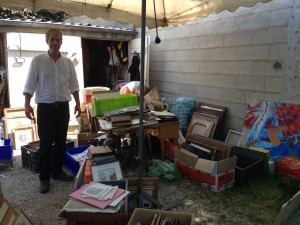
Hunting for antique art is a lot of fun. The secret of effective antiquing is to know where to look. As professional art dealers, my wife and I spend a fair amount of time in the search of the unusual and unique pieces. We cover many fun places here in the USA and in over 10 different countries. Here we will share with you how you can benefit from our experience.
The main secret is to be quick in making decisions, we follow our gut feeling and buy, buy, buy (and then study, restore and research each piece). The problem is finding the right opportunity to buy, as the occasion does not present itself frequently. Therefore when buying we need to cover many venues as quickly as we can, this is why we don’t spend too much time thinking about an acquisition but rather follow as we said: our gut feeling.
Where to go hunting for antiques? In our case we are looking for artwork on paper, antique prints and old maps that date over 500 years old to the present. Old paper such as what we are looking for can occasionally be found in the midst of traditional antiques such as furniture found in malls and antique shows.
The best advice is to map out your itinerary (of course we do this, we sell antique maps). You need to know the opening hours of all the venues you are covering and have phone numbers on hand in case you have difficulty locating a store or market. Start early and carry lots of bills in small denominations. If writing checks, keep a couple of pens handy as well as your driver’s license.
To cover a wide area, my wife and I split up. We will enter an antique mall and head off in opposite directions. We play a game we call Quick Tiq (for Quick AnTIQuing). Whoever finds the oldest, most unusual and unique pieces first, wins. Believe me we are fast.
Keep your eyes focused on the prize, turn off your phone, scan quickly in all directions and give special attention to bottom shelves and higher up. Most people don’t look there.
We will visit antique malls, antique stores, consignment shops, thrift stores and flea markets in search of the prize. There is always a little something.
Now we are not all art dealers and do not have unlimited space to exhibit our finds at home or office, so we need to be selective. This doesn’t mean you can not play a game of Quick Tiq! Set yourself objectives. One of our favorites is to be the first to find something that is over a certain age, such as 200 years old when in Europe and 100 years in the USA. For this you should keep your cell phone on to call or text your opponent with the location of your win. Happy hunting for antique art!


